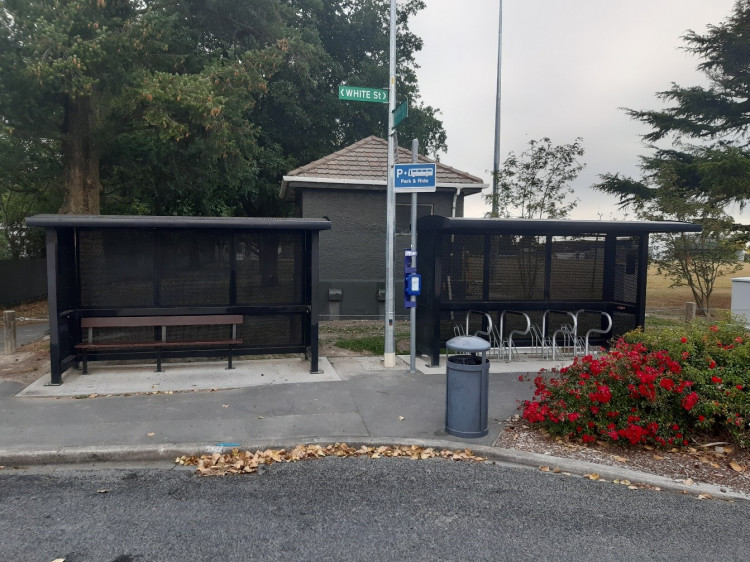The reach of public transport is extended when people can cycle or use micromobility to get to and from a stop.
Designing connections for cycling and micromobility to and from public transport requires consideration of safety, directness, and end of trip/interchange facilities.
This access option is likely to be more attractive for longer public transport journeys, as cyclists may simply choose to ride the whole distance for shorter overall trips.
The below table provides a typical practice guide about potential catchment sizes associated with cycling and powered micromobility.
Riding catchments and service provision
(based on Department of Transport and Main Roads 2016)
|
Riding catchment |
For |
|
≤2.5km or 10min riding |
All public transport stops or stations with convenient end-of-trip access to stop/station, amenities and attractive public transport services |
|
≤5km or 20min riding |
Premium public transport stops and high passenger volume stations with high-quality, secure end-of-trip facilities |
|
Up to 15km |
Limited uptake, only for high passenger volume public transport stations where there is a long-distance commute to the nearest activity centre; important for ‘end of line’ services, particularly train stations, and some e-bike access |
For additional information on riding catchments and more detailed guidance refer to:
Queensland Public Transport Infrastructure Manual (2015), Chapter 3(external link)
To plan for cycling and micromobility access to public transport, the following should be considered:
Planning for cycling and micromobility should identify appropriate locations for infrastructure interventions based on the role of each street for movement and place. It should also include wayfinding for cycling in local streets to attract additional cyclists. More information can be found in the Cycle Network Guidance.

Example of cycle parking facilities, Rangiora (Credit: Simon Hart)
Street design that makes cycling and micromobility safe and attractive promotes good connections for public transport journeys. As is the case for walking, low traffic volumes and low speeds promote safer travel. High quality cycling infrastructure (ie separated from traffic) should be provided where traffic volumes or speeds are high.
Traffic calming could also be considered. Considerations about whether cyclists and those using powered micromobility will be comfortable using traffic lanes safely depends on the street context.
Designing cycling infrastructure in the Cycling Network Guidance
Micromobility such as private and shared e-scooters, and shared mobility such as bicycle and e-bike share, are emerging ways for people to bridge the first/last mile gap and to extend the reach of public transport.
There is limited research on the extent to which micromobility is being used as a first/last mile solution. However, the tools to encourage the safe use of non-powered micromobility devices to access public transport are like those for walking, such as wider footpaths and high-quality crossings, and cycling.
Powered micromobility such as electric scooters are newer to New Zealand and are currently often operated on footpaths.
Legislation is being considered to support use of cycle lanes and cycleways which may be a more appropriate location for those wanting to travel at speeds similar to cycling.
Charging points and secure storage may be beneficial at larger stations, particularly at ‘end of line’ stations. Where shared bikes or scooters are used, space should be provided outside the station where they can be left without blocking footpaths. At stations with large numbers of people arriving by walking, cycling and scootering, infrastructure should provide separation between people moving at different speeds.

Example of e-scooter parking facilities (Source: bikeep)
Permeable street networks allow for direct cycling and micromobility journeys.
Permeability can include off-road connections not available to cars and larger motor vehicles or protected mid-block crossings across busy streets.
Opportunities to provide cycling and micromobility connections to make journeys more direct are presented in the Cycle Network Guidance.
Reducing severance in the Cycling Network Guidance
The attractiveness and therefore use of cycling and micromobility to access public transport increases if high quality end of trip facilities are provided at the stop or station.
Such facilities may include: